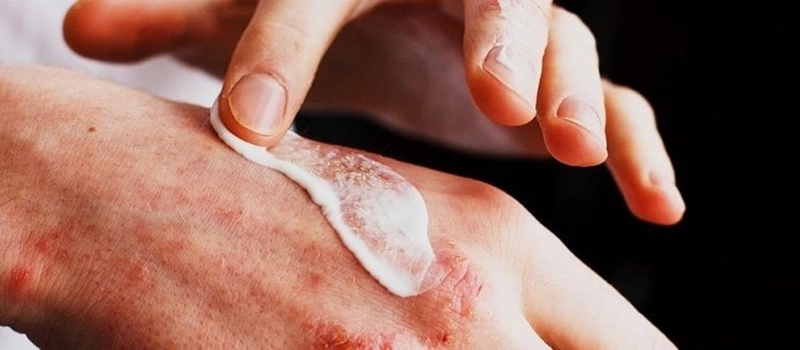
Did you know that your skin is actually classified as one of the organs of the human body, in the same way your brain, heart, and lungs are? It’s true, and then not surprisingly it’s far and away the largest and most expansive organ of the human body. Plus, the fact that it’s the only one that’s exposed to the elements means that it takes more wear and tear. Think of why you have to put on sunscreen to prevent a sunburn. But when it comes to dry skin and atopic dermatitis, it’s more a situation where you had to remedy it rather than prevent it.
Get bit by a mosquito and you’ll have itchy, raised red skin for a short time and the discomfort of it is only temporary. However, if you atopic dermatitis then you’re dealing with itchy skin and crusted skin with rashes on an ongoing basis. It’s a really unfortunate affliction to have, and if you’re someone with it then it’s perfectly natural to be asking how to cure atopic dermatitis.
We’ll get to the answer in more detail below, but the truth is you don’t ‘cure’ atopic dermatitis. Rather, you manage the condition so that it’s as little of a discomfort and visual blemishing as possible. And as for atopic dermatitis vs eczema, there’s no difference. Atopic dermatitis is the clinical term for eczema, and the condition is definitely more commonly known as eczema.
The truth here is that the medical community has never been able to determine exactly what causes it. But the one thing they do know is that most people with it have a genetic predisposition for it - meaning that it ‘runs in the family’ as the expression goes and that you’ve inherited it from one of your parents. There’s also a connection between having hay fever (seasonal allergies) increases the chance of you developing atopic dermatitis.
Another possible cause is living in a region that has a lot of pollution, and more unproven suggestion that some people believe is that you’re more likely to get eczema if you live in cold climate. One thing we can say for certain is that food allergies will never be what’s causing your eczema.
One thing about this skin disorder is that in nearly every instance the person who has it will be showing the signs of it by the time they’re 5 years old. And those symptoms will include red, crusted, scaly areas on their cheeks, scalp, or the front of their arms and legs. The back of the neck and knees and in elbow creases are the most common locations, but may also be on the face, wrists, and forearms.
As we mentioned, there is no cure for eczema and instead you need to focus on managing the severity of it as there’s no way to permanently ‘get rid of it’. The first place to start with that is to use a medicated lotion like Epilyt or something similar that softens and smoothes thickened, rough, scaly or dry skin.
Using a quality moisturizer is a good idea too, and as a guideline for a moisturizer try to choose one that has the lowest water content. That will rule out most of the inexpensive moisturizer creams, so be prepared to spend a little more to get a moisturizing cream that works well for atopic dermatitis.
One thing we haven’t touched on yet when it comes to preventing or reducing the severity of atopic dermatitis is avoiding ‘triggers’ that cause your skin to react in the way it does. Here’s a list of common triggers for eczema reactions:
Strong soaps and detergents
Some fabrics, like wool or scratchy materials
Perfumes, skin care products, and makeup
Pollen and mold
Animal dander
Tobacco smoke
Stress and anger
Dry winter air and / or low humidity
Long or hot showers or baths
Dry skin
Dust or sand
Foods like eggs, dairy products, wheat, soy, and nuts
Lastly, you may also want to consider using some type of effective skin rejuvenation product that works for eczema. One of the more highly recommended ones is Shiseido Benefiance as it is expertly formulated to improve dry skin by reinforcing skin's structure to resist the development of eczema on the upper layer of the skin.
Another good one is Vichy Skincare from the famous french skincare formulation masters. It’s more of a general skin benefits cream, but the purity of it makes it very effective for finding relief from the dryness of atopic dermatitis.